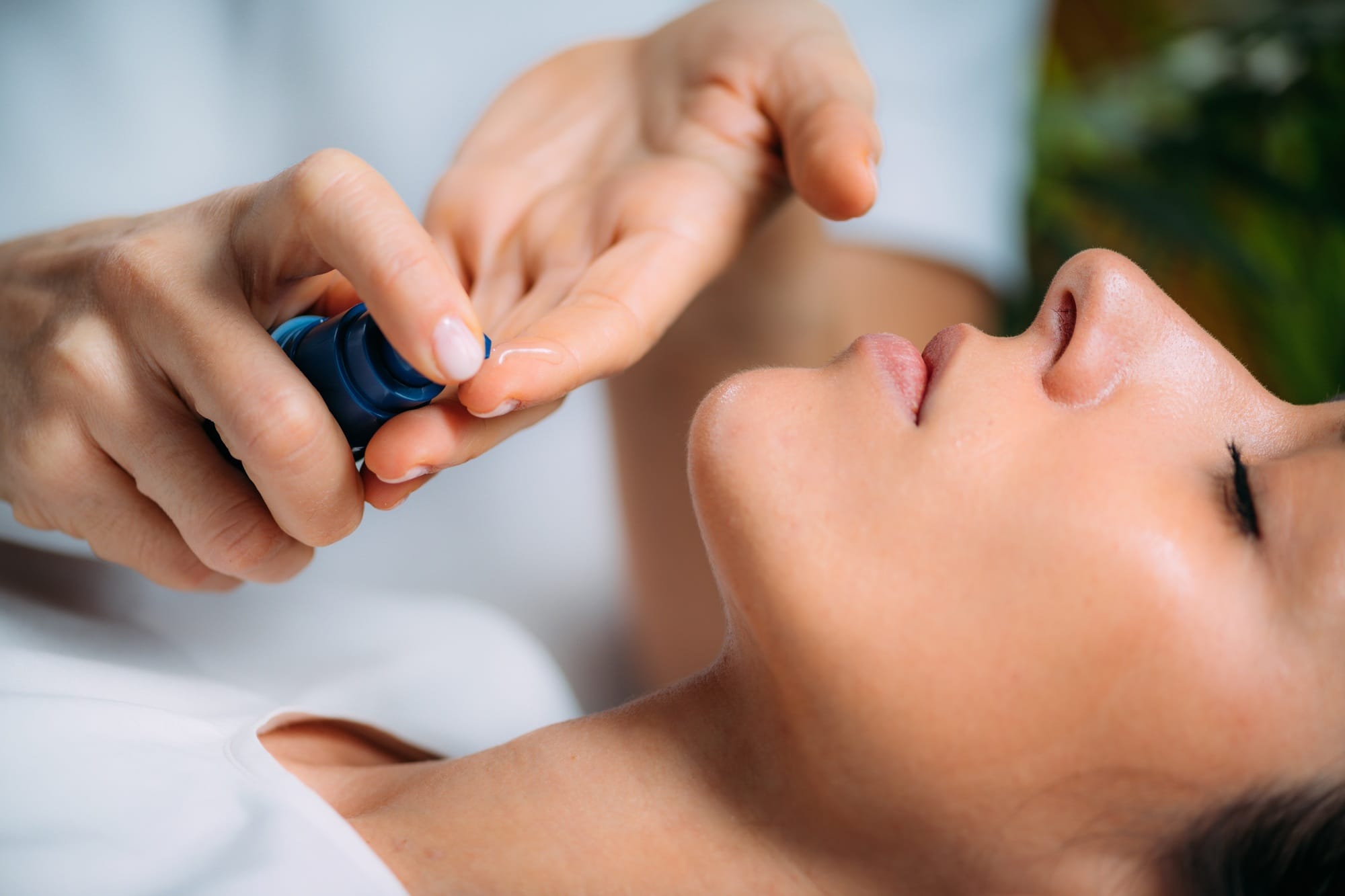
BodyLuxe
December 13, 2024

If you’ve spent any time exploring the world of skincare, you’ve likely encountered the buzz surrounding retinol and its powerful cousins known broadly as retinoids. Hailed as gold-standard ingredients in both over-the-counter products and prescription formulas, retinol and retinoids have become central figures in the quest for smoother, brighter, and more youthful-looking skin. But with all the hype and contradictory information online, it can be challenging to separate fact from fiction.
This comprehensive guide will cover everything you need to know before adding a retinol or retinoid to your skincare routine. From understanding what these ingredients actually do, to learning how to introduce them gently into your regimen, we’ll help you approach retinol use with confidence. By the end, you’ll be well-equipped to reap the anti-aging, acne-fighting, and radiance-boosting benefits of these vitamin A derivatives, all while avoiding irritation and unwanted side effects.
Retinoids serve as an umbrella term for a family of vitamin A derivatives that include retinol, retinal (also known as retinaldehyde), tretinoin (also known as Retin-A), adapalene, and more. Each of these ingredients works at a cellular level to encourage cell turnover, stimulate collagen production, and enhance the skin’s overall texture and tone.
Retinol is the most common over-the-counter retinoid. It’s often found in creams, serums, and oils that promise to reduce fine lines, treat acne, smooth roughness, and restore luminosity. Dermatologists frequently refer to retinol as a proven ingredient that effectively addresses multiple skin concerns simultaneously. Unlike harsher prescription retinoids, over-the-counter retinol is generally milder, making it a suitable starting point for beginners.
Boost Cell Turnover:
One of the key reasons retinoids are so well-regarded is their ability to speed up cell turnover. This process helps shed dull, dead skin cells and reveals fresher, healthier cells underneath. The result? A brighter, smoother complexion.
Reduce Fine Lines and Wrinkles:
By stimulating collagen production and improving the skin’s supportive structure, retinoids minimize the appearance of fine lines and wrinkles over time. They also help thicken the deeper layers of the skin, making it more resilient and less prone to developing new lines.
Treat Acne and Clogged Pores:
Retinoids help prevent pore blockages by normalizing cell turnover within follicles. This translates to fewer whiteheads, blackheads, and inflammatory acne lesions. For those struggling with persistent breakouts, a retinoid can be a game-changer.
Even Out Skin Tone and Diminish Discoloration:
Hyperpigmentation, dark spots, and sun-induced discoloration often fade with consistent retinoid use. Over time, your skin can appear more even-toned and radiant.
Enhance Product Absorption:
By smoothing your skin’s surface and removing built-up dead skin cells, retinoids can help the rest of your skincare products—such as hydrating serums, antioxidants, and moisturizers—work more effectively.
In the past, many dermatologists recommended introducing retinol around age 30, when the first signs of aging typically become visible. However, it’s no longer uncommon to start using retinol in your mid-20s—especially if you’re already seeing early signs of aging, sunspots, or are eager to adopt a preventive approach.
Keep in mind that starting a retinol routine at a younger age isn’t a requirement. But if you’re noticing subtle changes in your skin or simply want a head start on long-term skin health, there’s no harm in beginning earlier—just ensure you choose a gentle formula and follow a slow integration process.
Patience is key when it comes to using retinol. The most common mistake is jumping in too quickly with a high-strength product. This can lead to irritation, redness, dryness, and flaking. To avoid these pitfalls, follow these steps:
Start Low and Slow:
Begin with a low-percentage, over-the-counter retinol (around 0.01% to 0.03%) if you’re a first-timer. Apply a pea-sized amount just once or twice a week. Give your skin a chance to adjust before increasing usage.
Give It Time to Acclimate:
After a couple of weeks, if you’re tolerating retinol well—meaning no excessive redness or irritation—you can start applying it every other night. Eventually, you may work up to using it nightly, but don’t rush this process. Some people remain comfortable with every-other-night application for the long haul, and that’s perfectly fine.
Avoid Over-Exfoliation:
Since retinol itself speeds up cell turnover, using aggressive physical or chemical exfoliants on the same day can cause unnecessary irritation. Try to space out your exfoliation days and avoid using retinol on those nights.
Consider Time-Release Formulas:
If you have sensitive or acne-prone skin, look for “time-release” or “encapsulated” retinol. These formulations release the active ingredient slowly throughout the night, reducing the likelihood of irritation.
It’s normal to experience mild dryness, slight redness, or subtle flaking as your skin adapts to retinol. These side effects often improve over time. However, if you encounter persistent burning, intense redness, or severe peeling, it’s a sign you may need to scale back frequency or choose a lower-strength product.
Who Should Be Cautious With Retinol?
If you have rosacea, eczema, or especially reactive skin, approach retinol with extra caution or consult a dermatologist before use. Some individuals simply cannot tolerate retinol, and that’s okay. There are plenty of other anti-aging ingredients on the market, such as peptides, niacinamide, or soothing botanicals, that can provide impressive results without irritation.
Retinoids are not necessarily “phototoxic,” meaning they don’t react harmfully with sunlight. However, many retinoids, including retinol, do break down when exposed to UV rays. This degradation diminishes their effectiveness and can waste your investment in a high-quality product.
For best results, apply your retinol at night. This allows your skin to absorb the ingredient under optimal conditions. When you wake up, you’ll have given the product hours to work without UV interference.
Because retinoids can thin the outer layer of skin and make it temporarily more vulnerable to UV damage, it’s crucial to wear broad-spectrum sunscreen with at least SPF 30 every day. This step is non-negotiable. Proper sun protection maximizes the benefits of retinol, prevents new photo-damage, and helps maintain your skin’s overall health.
Additional Tips for Sun Safety:
Fine lines, discoloration, and loss of firmness aren’t limited to your complexion. Your neck and décolletage are often the first places to show signs of aging. The good news: retinol can help here too! Just remember that the skin on your neck and chest may be more delicate, so:
Dilute With Moisturizer:
If your usual retinol is too strong for your neck or chest, try mixing a drop of it into your ceramide-rich moisturizer before applying.
Use Specialty Formulas:
Look for products specifically designed for the neck and chest. These often contain lower doses of vitamin A and additional soothing ingredients to help prevent irritation.
Go Slow, Just Like with Your Face:
Begin applying to these areas just once or twice a week until your skin adjusts.
If you’ve tried retinol and found it too harsh, there are other ways to achieve anti-aging and complexion-enhancing results:
Bakuchiol:
A plant-derived ingredient often touted as a gentle retinol alternative, bakuchiol can improve skin tone, reduce the appearance of fine lines, and brighten without causing the dryness or irritation commonly associated with retinol.
Peptides and Niacinamide:
Peptides support collagen production while niacinamide helps improve texture, redness, and discoloration. These ingredients work synergistically for smoother, calmer skin.
Antioxidants:
Vitamin C, vitamin E, and resveratrol help fight free radicals, prevent environmental damage, and maintain a youthful glow—without the peeling or flaking.
Gentle Exfoliators:
If retinol is too irritating, consider mild chemical exfoliants like lactic acid or mandelic acid. They help reveal fresh skin without the same level of dryness or sensitivity.
To get the most out of your retinol without dealing with ongoing discomfort, consider these tips:
Moisturize Generously:
Using a fragrance-free, ceramide-rich moisturizer after applying retinol can help prevent transepidermal water loss and soothe your skin.
Short Contact Therapy:
If you’re struggling with sensitivity, apply retinol for about 30 minutes and then rinse it off. Gradually increase contact time as your tolerance improves.
Skip Other Irritants:
Combining retinol with strong actives (like high concentrations of AHAs, BHAs, or benzoyl peroxide) can exacerbate irritation. Keep your routine simple and introduce new products one at a time.
Consult a Dermatologist:
If your skin doesn’t seem to improve or you have ongoing issues, seek professional advice. A dermatologist can recommend a prescription retinoid with a more tailored potency or suggest alternative strategies for your skin type.
Myth 1: Retinol Thins the Skin
Retinol can make the outermost layer of the skin thinner as it encourages cell turnover. However, it actually helps thicken the deeper layers where wrinkles form, leading to healthier skin in the long run.
Myth 2: You Can’t Use Retinol With Sensitive Skin
Not everyone with sensitive skin must avoid retinol. It’s about finding the right product, starting slowly, and using plenty of soothing, barrier-supporting ingredients.
Myth 3: More Is Better
When it comes to retinol, more product or a higher percentage does not mean better results—at least not immediately. Overdoing it often leads to irritation, which can derail your progress.
Myth 4: Retinol Shows Immediate Results
Patience is vital. It can take several weeks to months to notice a significant difference in fine lines, discoloration, and overall texture.
Using retinol is a long game. Many experienced users swear by its cumulative benefits, reporting smoother, more resilient skin years down the line. Consider it an integral part of an ongoing skincare strategy rather than a quick fix. Over time, retinol can become a cornerstone of your regimen, helping maintain your skin’s youthful glow and resilience.
And remember: It’s never too late to start. Whether you’re in your 20s looking to prevent future damage, in your 30s addressing early signs of aging, or in your 40s and beyond seeking comprehensive rejuvenation, there’s a retinol or retinoid approach that can work for you.
Retinol and retinoids are powerful allies in the fight against visible signs of aging, uneven tone, and acne. Despite their ability to transform your skin over time, it’s crucial to approach these ingredients with care and knowledge. By starting slowly, using the right amount, protecting your skin from the sun, and considering alternatives if necessary, you can reap all the rewards without unnecessary discomfort.
As you embark on your retinol journey, keep the lines of communication open with a dermatologist, remain patient with the adjustment period, and stay committed to sun protection. Before long, you’ll see for yourself why retinol has earned its place as one of the most revered ingredients in modern skincare.
The leaves are changing, and so can you. This Fall, BodyLuxe invites you to harvest your confidence and reveal your most sculpted self.
Take up to $4,200 off our most-loved procedures — FormSculpt® Lipo, Brazilian Butt Lift, Fat Transfer (to Breasts or Hands), Skin Tightening, or a Mini Tummy Tuck — and step into sweater weather feeling sleek, sculpted, and radiant.
This limited-time Fall Into Luxe offer ends November 30, and appointments are booking fast.
🍁 Tap below to reserve your consultation and let BodyLuxe shape the look you’ll love showing off all season long.